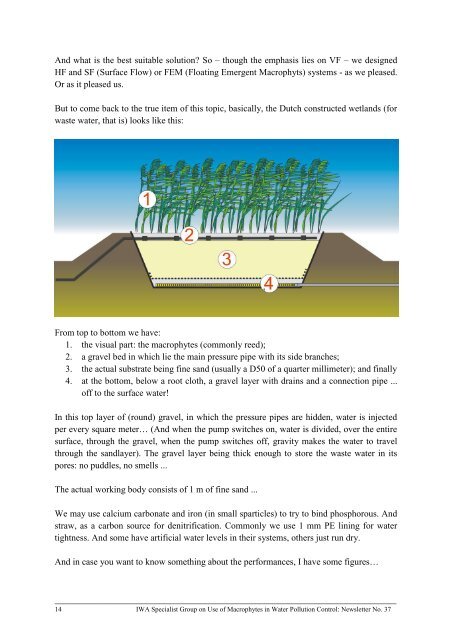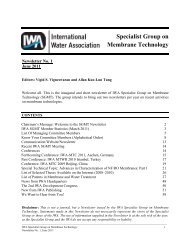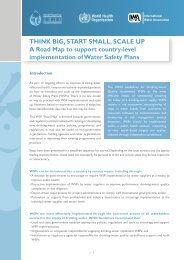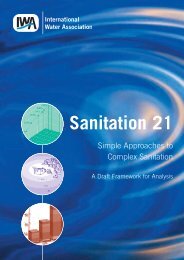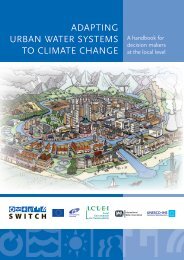Specialist Group on Use of Macrophytes in Water Pollution ... - IWA
Specialist Group on Use of Macrophytes in Water Pollution ... - IWA
Specialist Group on Use of Macrophytes in Water Pollution ... - IWA
You also want an ePaper? Increase the reach of your titles
YUMPU automatically turns print PDFs into web optimized ePapers that Google loves.
And what is the best suitable soluti<strong>on</strong>? So – though the emphasis lies <strong>on</strong> VF – we designed<br />
HF and SF (Surface Flow) or FEM (Float<strong>in</strong>g Emergent Macrophyts) systems - as we pleased.<br />
Or as it pleased us.<br />
But to come back to the true item <strong>of</strong> this topic, basically, the Dutch c<strong>on</strong>structed wetlands (for<br />
waste water, that is) looks like this:<br />
From top to bottom we have:<br />
1. the visual part: the macrophytes (comm<strong>on</strong>ly reed);<br />
2. a gravel bed <strong>in</strong> which lie the ma<strong>in</strong> pressure pipe with its side branches;<br />
3. the actual substrate be<strong>in</strong>g f<strong>in</strong>e sand (usually a D50 <strong>of</strong> a quarter millimeter); and f<strong>in</strong>ally<br />
4. at the bottom, below a root cloth, a gravel layer with dra<strong>in</strong>s and a c<strong>on</strong>necti<strong>on</strong> pipe ...<br />
<strong>of</strong>f to the surface water!<br />
In this top layer <strong>of</strong> (round) gravel, <strong>in</strong> which the pressure pipes are hidden, water is <strong>in</strong>jected<br />
per every square meter… (And when the pump switches <strong>on</strong>, water is divided, over the entire<br />
surface, through the gravel, when the pump switches <strong>of</strong>f, gravity makes the water to travel<br />
through the sandlayer). The gravel layer be<strong>in</strong>g thick enough to store the waste water <strong>in</strong> its<br />
pores: no puddles, no smells ...<br />
The actual work<strong>in</strong>g body c<strong>on</strong>sists <strong>of</strong> 1 m <strong>of</strong> f<strong>in</strong>e sand ...<br />
We may use calcium carb<strong>on</strong>ate and ir<strong>on</strong> (<strong>in</strong> small sparticles) to try to b<strong>in</strong>d phosphorous. And<br />
straw, as a carb<strong>on</strong> source for denitrificati<strong>on</strong>. Comm<strong>on</strong>ly we use 1 mm PE l<strong>in</strong><strong>in</strong>g for water<br />
tightness. And some have artificial water levels <strong>in</strong> their systems, others just run dry.<br />
And <strong>in</strong> case you want to know someth<strong>in</strong>g about the performances, I have some figures…<br />
___________________________________________________________________________<br />
14 <strong>IWA</strong> <str<strong>on</strong>g>Specialist</str<strong>on</strong>g> <str<strong>on</strong>g>Group</str<strong>on</strong>g> <strong>on</strong> <strong>Use</strong> <strong>of</strong> <strong>Macrophytes</strong> <strong>in</strong> <strong>Water</strong> Polluti<strong>on</strong> C<strong>on</strong>trol: Newsletter No. 37


